Morgan 3 Wheeler Review

Car or bike? Whatever, the Morgan 3 Wheeler is fun!
Your eyes aren’t fooling you. Yes, this is Motorcycle.com and, yes, the thing you’re looking at has three wheels, a steering wheel, bucket seats, seat belts and three pedals on the floor. It’s called, simply, the Morgan 3 Wheeler, and because it’s missing a fourth wheel, the Department of Motor Vehicles classifies it as a motorcycle (yes, even in Texas). And so, since we are Motorcycle.com afterall, it’s our duty to give the 3 Wheeler a whirl.
A Brief History Lesson
In the early 1900s, Harry Morgan, the company’s namesake, set out to build a fun and affordable motor vehicle in his English factory in Malvern Link, England. His idea was to fit a powerful motorcycle engine (usually J.A.P. V-Twins) into a lightweight chassis. The invention was called a “Cyclecar,” and subsequent iterations of Morgan’s first design went on to win numerous races and set records. In its day, it was a popular two-seater to have if you were serious about your motoring.
Albert Ball was just such a man. An English pilot who would later perish in battle during the first World War at only 20 years old, Ball was the modern day equivalent of an adrenaline junkie. Not long before his death, he took delivery of a special Morgan Cyclecar with sportier bodywork, dubbed the Grand Prix. So enamored he was with it, he once said, “To drive this car was the nearest thing to flying without leaving the ground.”
Morgan would later create the Aero (of which the namesake still exists in the company’s four-wheelers), a more sporty, mass-produced three-wheeler inspired by the Grand Prix. The Super Aero came next, and its lowered stance covered with streamlined bodywork influenced future Cyclecars and 3 Wheelers to this day. Throughout the years, the basic architecture of the 3 Wheeler remained the same, and later more powerful Matchless engines replaced the J.A.P. units. Morgan ceased production during WWII, but resumed again in 1946. However, steel supplies were limited at this time, and the popularity of the 3 Wheeler was waning. Morgan decided to discontinue producing the 3 Wheeler in 1950, with the last one rolling out the factory doors in 1953.
Modern Revival
Contrary to what some believe, the Morgan Motor Company never went out of business, instead focusing its efforts on its four-wheelers. Meanwhile, at the start of the new millenium, Pete Larson, of Liberty Motors in Seattle, decided to build his own Cyclecar based on the Morgan 3 Wheeler. His version uses a Harley-Davidson Twin Cam 88 or 103 (depending on customer preference) but otherwise looks nearly identical.
Charles Morgan, grandson of HFS Morgan, learned about this and was so inspired that, in 2011, nearly 60 years after the last 3 Wheeler left the factory, decided to return to the company’s roots and revive the legendary 3 Wheeler, modernizing it for the 21st century. Morgan and Larson negotiated a buyout of all ACE designs, and the ACE was transformed into the Morgan 3 Wheeler. Now Larson is one of a select few Morgan 3 Wheeler retailers in the U.S.
Despite the fact our particular tester is a 2013 model, the only thing modern about the current day Morgan 3 Wheeler is its fuel-injected S&S V-Twin and the 5-speed Mazda Miata transmission bolted to it.
The 1983cc, four-valve S&S X-Wedge engine is the perfect combination of old and new. Its 56-degree vee angle is wider than the 45 degrees used on Harleys, and it uses three belt-driven camshafts – one central intake cam, two outer exhaust cams – with pushrods running nearly parallel to the valves. A one-piece forged crankshaft with plain main and connecting rod bearings help the X-Wedge cope with the added weight the 3 Wheeler (published reports claim curb weight at 1268 lbs) presents over a lighter motorcycle.
The engine proudly sits on its rubber mounts at the front of the vehicle, a smart positioning considering it’s air/oil-cooled. The rest of the 3 Wheeler is of steel-tube frame design with aluminum sheeting making up the body panels. Double A-arm suspension up front is car-like in its design, while the single rear wheel is suspended via trailing arm and fed power through a belt. Skinny 19-inch front wire wheels are just 3.5-inches across and add to the vintage appeal of the Morgan. The hidden rear wheel is a slightly more standard 16-inch variety, wearing 175/55 rubber.
The Experience
Morgan claim 82 hp at 5250 rpm and a peak torque of 103.3 lb-ft at 3250 rpm. On paper, those don’t sound like remarkable stats, but once you get behind the steering wheel, it all makes sense. First, however, it helps to detach the steering wheel to aid ingress. Once inside, soak it all in. Admire the hand-stitched leather seats, center-mounted dial gauges, toggles to control the various lights and horn, the polished parking brake lever, the nicely weighted shift knob, and especially admire the starter button, hidden behind the “bomb release” cover as Morgan calls it, many of us wanted to yell “Contact!” before pressing it. They are all quality pieces that contribute to the experience.
Clutch in and starter button pressed, the X-Wedge takes a few cranks to come to life, after which it settles into its lumpy, unmistakable V-Twin rumble. It’s not a quick-revving engine, but it sounds oh so sweet with each straight pipe running down the length of both sides. You can see it slightly vibrating way out in front of you, but you don’t feel any of that at the wheel or the pedals.
Shift into first, let the clutch out, and the appeal of the 3 Wheeler is immediate. The engine carries plenty of torque to chirp the rear tire as you shift to second, though there’s a sizable gap between the two gears, says E-i-C Kevin Duke. And because you’re riding so low, the sensation of speed is elevated as the ground whizzes past. Manual steering means “communication is direct but lacks precision,” says Duke, attributing this to the skinny and tall-profile front tires. Braking, too, is not power assisted, but a meaningful push with your foot delivers, as Duke puts it, “pure feedback during threshold braking.”
Rowing through the gears is a delight, as the Mazda Miata 5-speed positively engages each gear, its throws nice and short. On downshifts, the brake and accelerator pedal are nicely spaced for a bit of heel-toe action (well, more like a modified version of it with the sides of your foot).
The car behaves like a well-thought-out 60 year-old sports car because, well, that’s what it is. However, when the pace picks up, its limitations expose themselves quickly. The skinny tires mean you can’t pull enormous g-loads through a corner (not that you’d want to), and the V-Twin runs out of breath up top. The chassis does exhibit a little flex, which Duke surmises, “likely aids suspension compliance and, when cornering hard, helps keep its tires in contact with the road.”
The 3 Wheeler’s limits are low, but it never claims to be a performance-oriented machine. All of our testers agree, driving it slow is equally as fun as exploring its limits, and probably more rewarding – at least you’ll have time to notice all the passersby checking you out. We were pleasantly surprised with its highway manners, too. The ride was fairly smooth with the suspension communicating bumps in the road, but the bumpsteer effect some journalists decried of early-production 3 Wheelers was nonexistent on our tester.
A Niche Within A Niche
Without a doubt, the Morgan 3 Wheeler is a unique and very special vehicle, and while your humble MO staff are motorcyclists through and through, we’re unanimous in our affection for the Morgan. Editorial Director, Sean Alexander, simply said, “I love it,” and Kevin called it “the coolest trike on Earth.”
It’s not without its faults, however. Without any doors, it takes a little practice to get in and out. The challenge level rises when factoring in the added obstacle of a hot exhaust pipe. Once in, the Morgan is cramped. “It needs about one more inch in every cockpit dimension,” says Sean. Each side of the 3 Wheeler features a padded leather cover over the body panel as a concession from Morgan that your outside arm will rest on it. If traveling with someone you particularly enjoy talking to, the intimate seating arrangement lends itself towards conversation with your passenger. However, wind noise brings talking to an end at over 40 mph. And though it looks to have spacious bonnet and boot areas, there’s hardly any storage under there.
Then there’s the price. Morgan West, of Santa Monica, California, who lent us this car, quoted a base price of $44,743 at current exchange rates. To get one like our tester, you’ll have to add the special order Harley-Davidson Candy Black Cherry paint job ($944.04), quilted leather interior ($400.70), Mohair based dark red tonneau cover ($421.08), ignition immobilizer ($224.13) and Factory Bright Pack, which includes chrome roll bars, polished exhaust, polished lower engine case, and chrome headlight buckets ($3,796.47). Tack on another $4418.03 for airfreight, Customs and delivery charges from Malvern Link, UK to Santa Monica, California, and you’re looking at a total of $60,734.37.
For our tester, once it arrived at Morgan West, the $12,660.63 Queen’s Diamond Jubilee package was added, which includes:
- A pair of Ruden Meister Swiss/German Mechanical stopwatches on engine turned dash mountings
- “Raptor” chrome air cleaner assembly
- S&S fuel injection system adaptor for “Raptor”
- Stainless Steel badge bar
- “In celebration of the new Morgan Three Wheeler” badge
- Triple earred Morgan knock offs on front wheels
- Pair of stainless steel/chrome wire wheels, including mounting of factory tires
- MotoLita wood rimmed steering wheel, exclusive for 3 Wheeler
- Pair of chrome turn signals
- Polished stainless steel rear tail light surround
- Silver center body racing stripe with red highlights on edges
- Morgan winged logo in center of steering wheel
- Engine turned dash panels
- Seat belt extensions
- UK front license plate
- MOG/RAF graphics
- Shark Graphics
When all is said and done, a Morgan 3 Wheeler like our tester will bring you back a lofty $73,395. Even keeping in mind that each one is built to order, that’s a tough pill to swallow (I’ve seen used examples in the $40k range). However, if price is no object and you truly want a vehicle unlike any other to enjoy the open road, look no further than the Morgan 3 Wheeler.
+ Highs
- Incredibly fun to drive
- Build it how you want it
- You’ll always be the center of attention
– Sighs
- Shallow wallets need not apply
- Cramped interior
- You’ll always be the center of attention

Troy's been riding motorcycles and writing about them since 2006, getting his start at Rider Magazine. From there, he moved to Sport Rider Magazine before finally landing at Motorcycle.com in 2011. A lifelong gearhead who didn't fully immerse himself in motorcycles until his teenage years, Troy's interests have always been in technology, performance, and going fast. Naturally, racing was the perfect avenue to combine all three. Troy has been racing nearly as long as he's been riding and has competed at the AMA national level. He's also won multiple club races throughout the country, culminating in a Utah Sport Bike Association championship in 2011. He has been invited as a guest instructor for the Yamaha Champions Riding School, and when he's not out riding, he's either wrenching on bikes or watching MotoGP.
More by Troy Siahaan



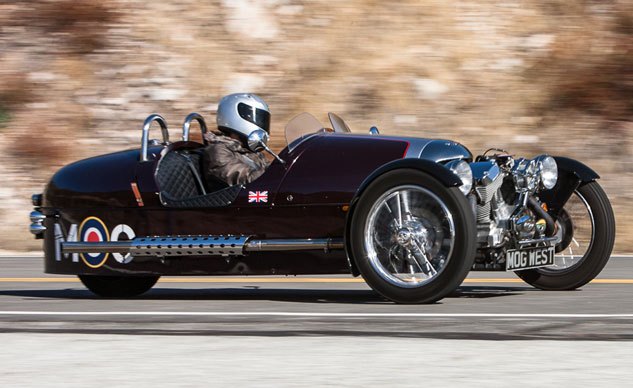

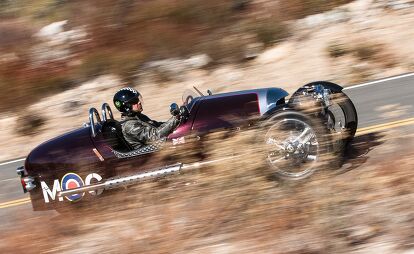
































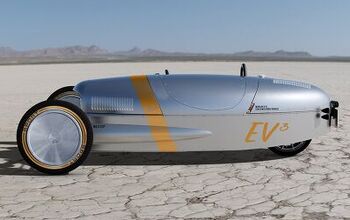



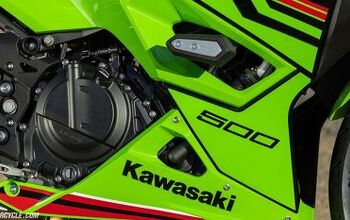












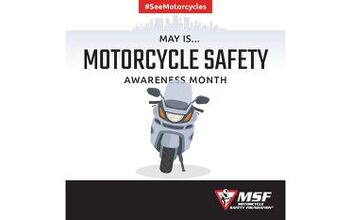
Comments
Join the conversation
chrome is metal is crome plastic
$74,000? I admit, I am envious of people with that much money to blow but c'mon, 74 grand and the fuel gauge doesn't work? I guess I'll have to settle for a used, low mileage Miata for $70,000 less if I want something slow and low but does handle. It kinda reminds me of the toilets with a built in stereo and neon lights, you don't need it but if you have the cash to blow, why not?